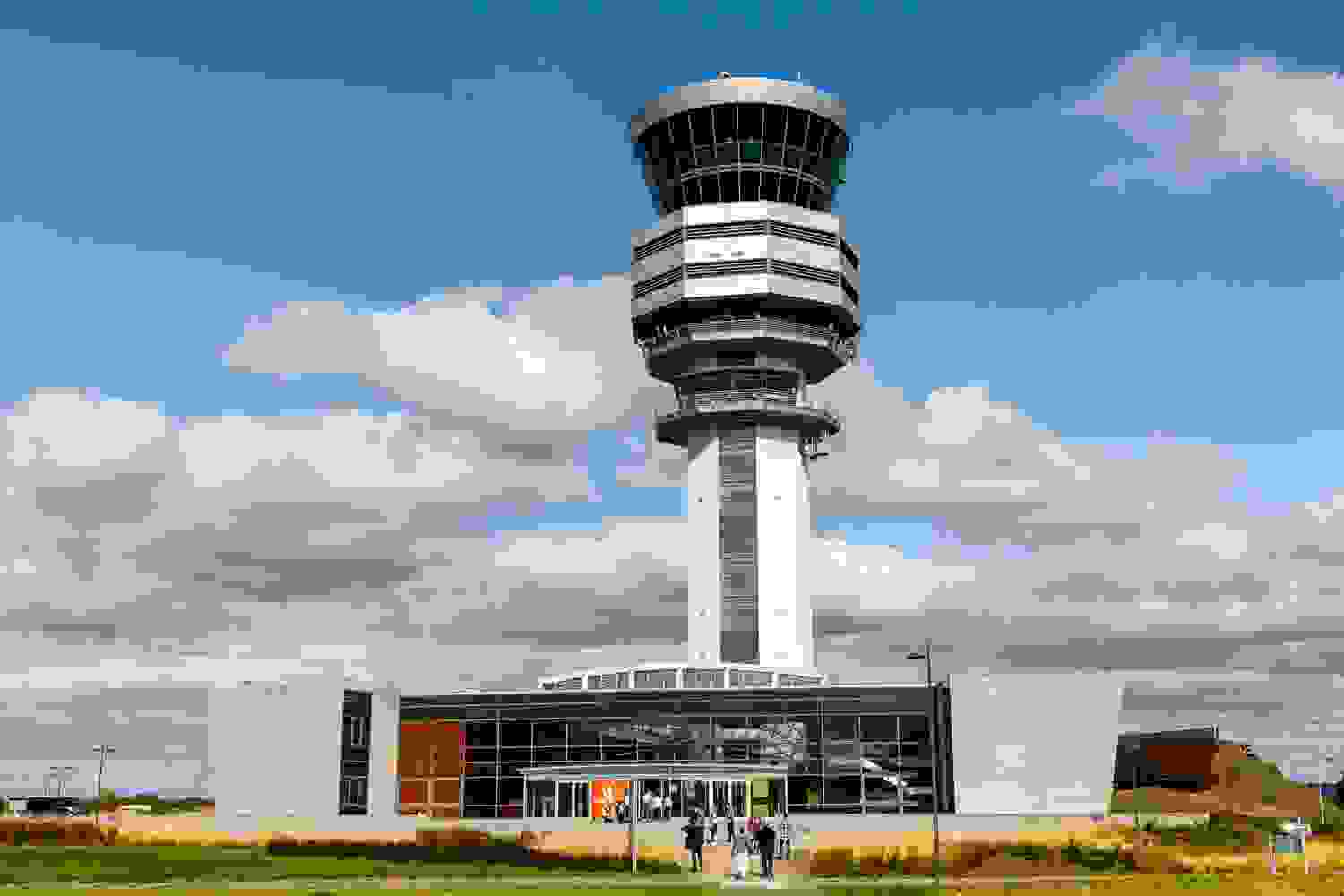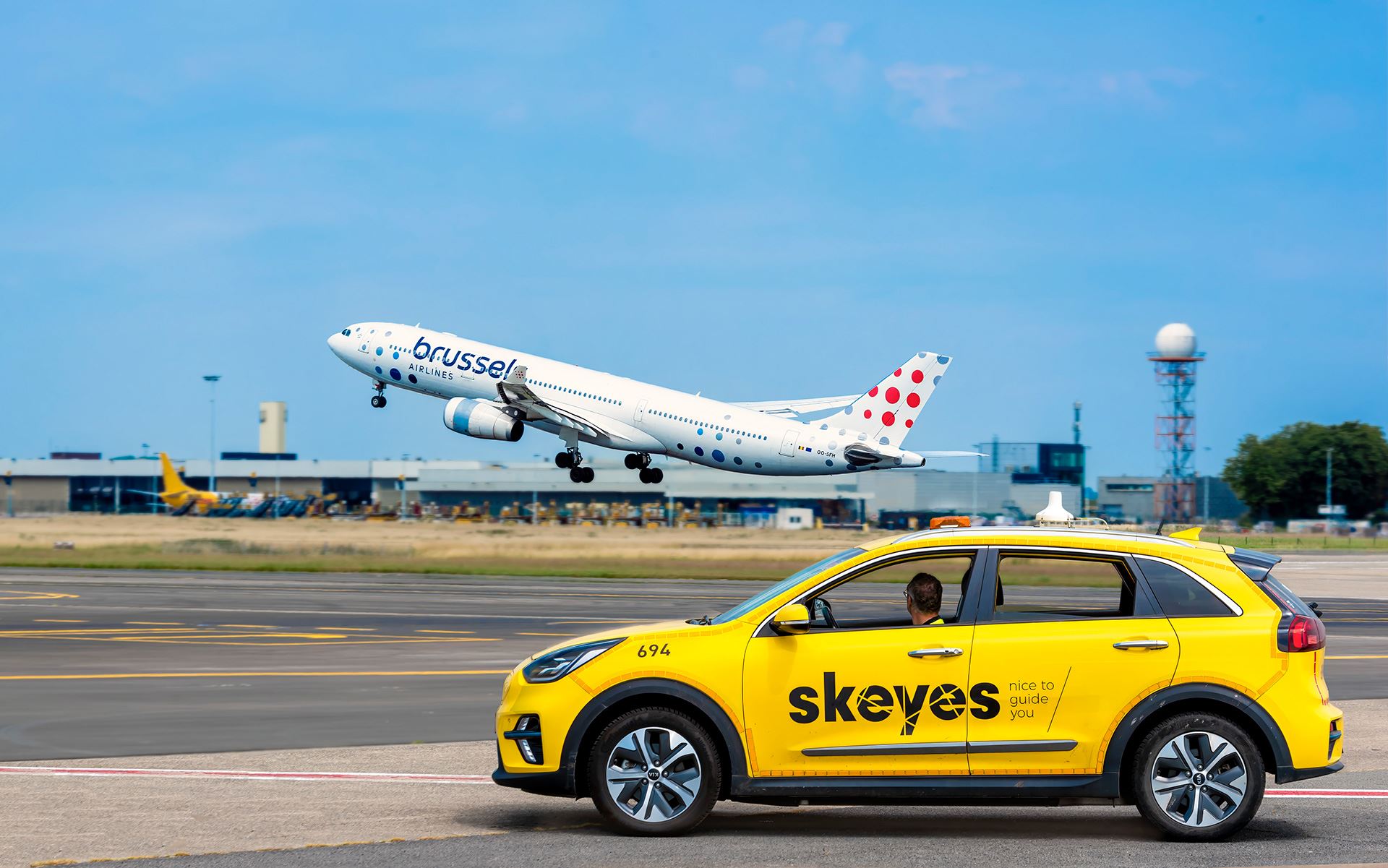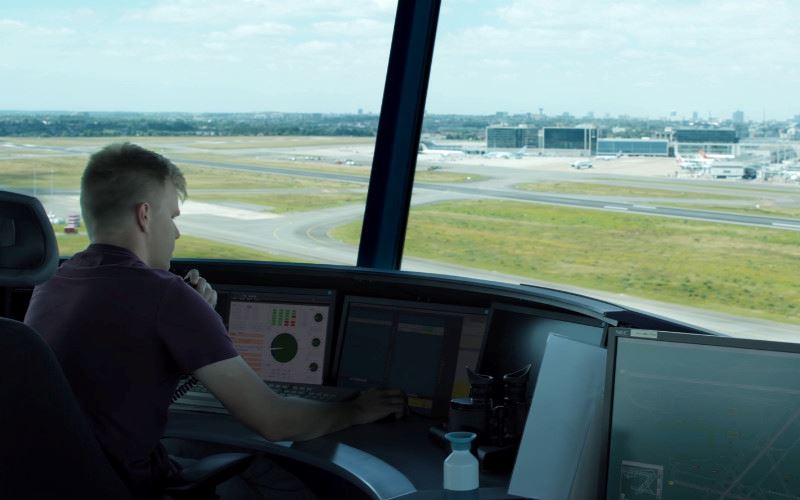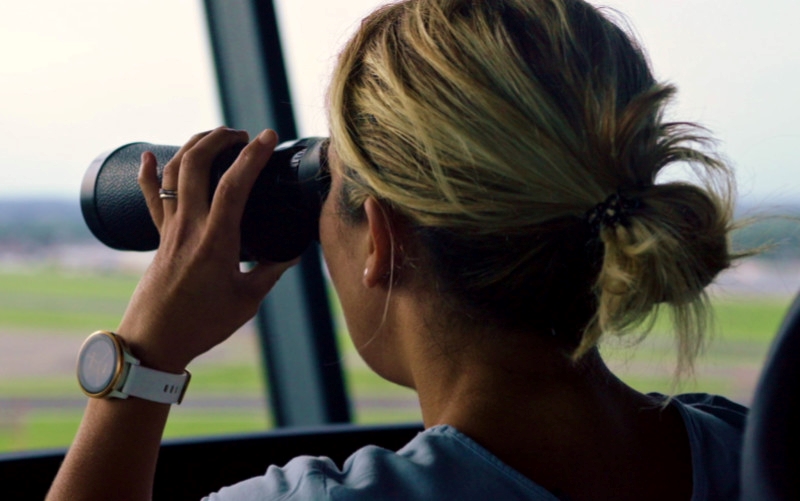The Brussels Airport control tower

The landmark control tower at Brussels Airport inspires, attracts, fascinates… everyone wants to climb it to admire the stunning view of the airport and the aerial ballet that makes us dream of holidays and exotic destinations. But above everything else the control tower is the centre of airport safety operations. Join us on a guided tour.
Behind the large glass doors is the ground level of the building, spanning over 3,500 square metres. The eye is inevitably drawn upwards towards the shaft of the tower that rises towards the sky through the glass ceiling. In the shaft are the elevators that the controllers and meteorologists take to access the upper floors.
The ground and first floors house the software development teams that have designed the Airport Movement System (AMS) -an advanced tower air traffic control system- as well as the Met Office, the nerve centre of meteorological forecasts, which is crucial for ensuring the safety of air traffic. The Aeronautical Information Management (AIM) teams are the final links in the operational chain who work from the tower.

At the upper floors
After having passed through the security doors, the lift takes up into the shaft of the tower to the 5th floor, where we find the meteorological observation post. At 36 m high it is ideally situated for making efficient observations.
We go up again, passing by the rest area and the technical rooms, and arrive at the 10th floor of the tower. At a height of 54 m, we discover the training visual control room.
This control room has similar features to that of the operational control room, which is situated straight above. It is used for training air traffic controllers and for testing technological developments such as the new functionalities of the Airport Movement System (AMS). It can also be used for operational purposes.

Finally, on the 11th floor, we arrive in the operational control room, where a stunning 60-meter-high panorama unfolds. It offers a 360° view and allows our controllers to have a visual on approaching aircraft and to distinguish all movements on the airport’s runways and taxiways. That visual range is expanded even more by a network of remote-controlled cameras that are sweeping all the areas that cannot be directly seen. The operational control room has a diameter of 18 m and comprises 12 working positions.
The air traffic controllers’ tools
Although our air traffic controllers have an excellent view from the operational control tower on the whole of the airport, its runways and the rest of its premises, they are assisted by numerous systems, which guarantee excellent visuals of the traffic situation regardless of the visibility conditions.
The radars are part of that. They display the position and the identification of all the vehicles and aircraft that have a transponder on board.

Another crucial piece of information for the controllers up in the tower are the flight plans. They compile all data with regard to the flight: the number, type of aircraft, destination, scheduled arrival time, etc.
All those data are processed by the Airport Movement System (AMS) developed by skeyes, which displays it on the controllers’ screens. Many features and automations featured by the AMS significantly improve safety and punctuality of air traffic at and around the airport.
Every working position is equipped with 5 screens which display:
- the flight plan data;
- the ground radar image, indicating and identifying all the airport’s taxiways, runways, vehicles and aircraft. That screen also allows to manage a whole series of guiding and control systems of aircraft on ground level;
- the image of the ‘air’ radar, which gives the position and identification of approaching aircraft;
- the meteorological information and applications that are crucial not only for the safety but also for the efficiency and punctuality;
- the camera system.
Tower air control, where communication is key
When you take the plane, several controllers are successively in charge of your safety. In the tower alone, three distinct functions ensure your aircraft will safely take the air, from the departure gate right up to take-off.
- Clearance delivery: the air traffic controller on this position takes up the coordination with on the one hand the Eurocontrol Central Flow Management Unit (CFMU) which is responsible for the overall management of the air traffic flows in Europe and on the other hand the en-route air traffic control centre of skeyes (CANAC 2) to deliver clearance for departing aircraft. The primary responsibility of the clearance delivery position is to ensure that the aircraft receives the proper route and slot for take-off. This information is transmitted to the ground controller in order to ensure the aircraft reaches the runway within the time limits assigned by the CFMU.

- Ground control: the ‘ground’ controller is responsible for the airport "movement" areas. These include all taxiways, holding areas, and some manoeuvring areas or intersections where aircraft arrive after having left the runway or the departure gates.
Aircraft and vehicles changing their position within these movement areas, are required to have clearance from the ground controller.
Efficient ground control is vital to smooth airport operations because not only is the ground controller in charge of the safety of ground movements, which constitutes his main mission, he is also responsible for optimising the order in which the aircraft are sequenced to depart at the runway threshold, with the specific purpose of accelerating take-off rhythm. - Air control: the ‘air’ controller is in charge of the movements on the runways as well as of air traffic in the vicinity of the airport. He clears aircraft for take-off or landing, thereby ensuring that the assigned runway is clear for the foreseen manoeuvre.
Regarding the traffic in the air, the air controller is responsible for managing a controlled airspace called "CTR" that covers the airport and in which he ensures the safety of the approaching or departing aircraft by giving the pilots adequate instructions.
If the air controller detects potentially unsafe conditions, he can tell the pilot of an aircraft in landing phase to go around, or even order an aircraft to abort departure.
Both in the tower and in the CANAC 2 control centre, good communication is key for air traffic safety and efficiency. Not only between the controllers and the pilots, but also between the controllers themselves. That way, they can make air traffic run like clockwork.




